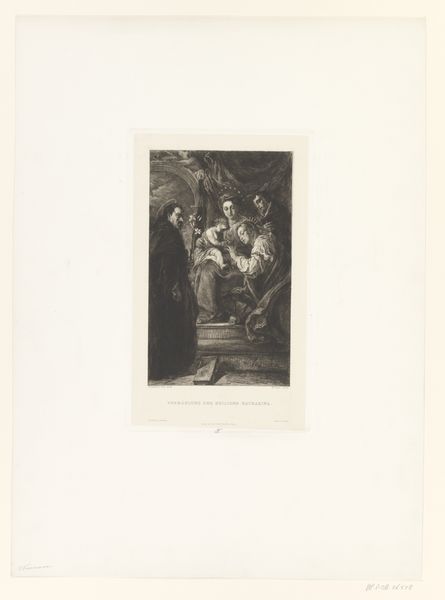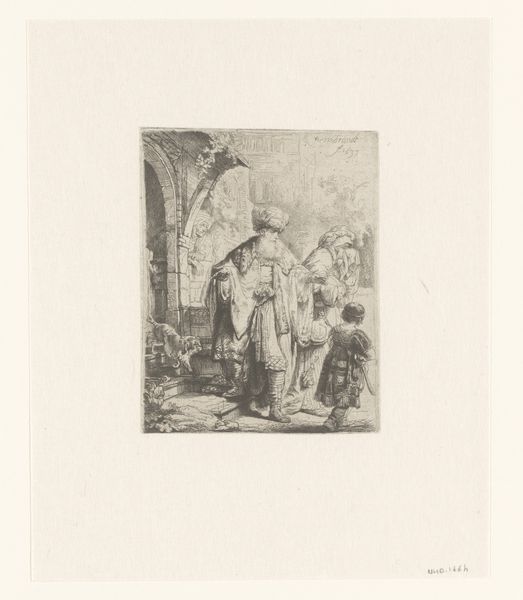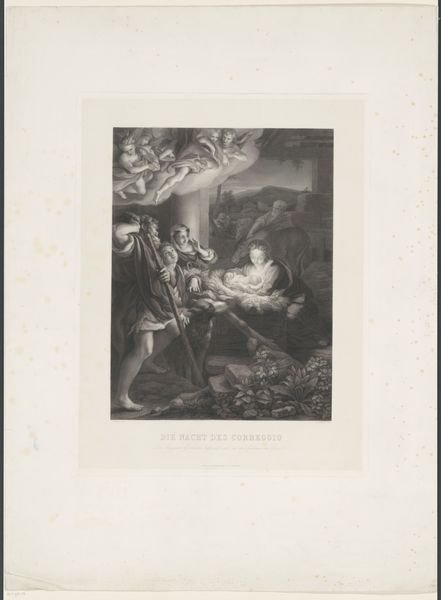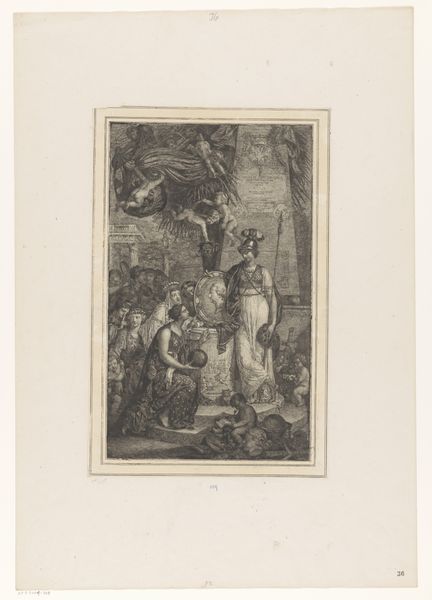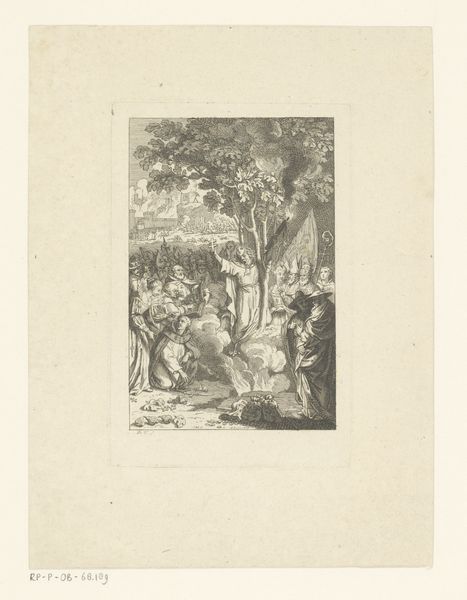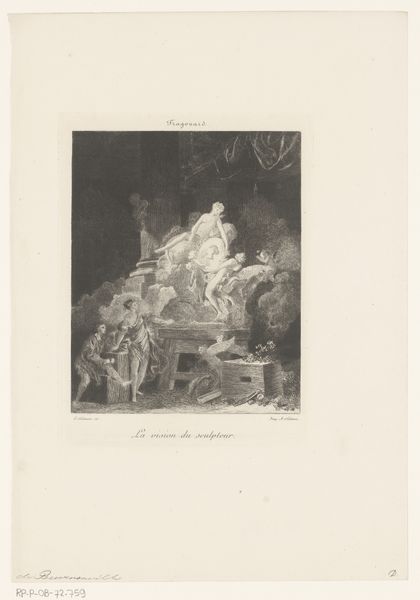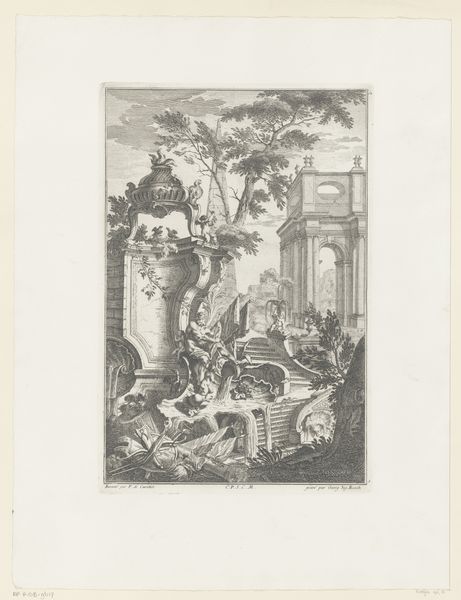
#
photo of handprinted image
#
pale colours
#
natural tone
#
ink paper printed
#
organic shape
#
light coloured
#
natural cool tone
#
repetition of white
#
white palette
#
remaining negative space
Dimensions: height 368 mm, width 253 mm
Copyright: Rijks Museum: Open Domain
William Unger created this engraving of ‘Miracle of Saint Francis Xavier’ using the intaglio printmaking technique. Unger would have used a tool called a burin to manually cut lines into a metal plate, allowing for remarkable detail and precision of line. Think about the labor involved; each line meticulously carved by hand. This painstaking process would have been essential in achieving the desired effects of light and shadow, which give the image its dramatic quality. The stark contrast, achieved by applying ink into the recesses of the design, would then be transferred onto paper, creating a mirror image of the original plate. Look closely at the image, and you'll notice how the linear nature of the engraving defines the forms and textures. The lines create a sense of depth and volume, from the billowing clouds to the figures in the crowd. The print's fine lines and tonal variations invite us to contemplate not just the depicted scene, but the artist's craft. By appreciating the material and process behind the engraving, we gain a deeper understanding of the artwork and the skilled labor required for its creation.
Comments
No comments
Be the first to comment and join the conversation on the ultimate creative platform.

